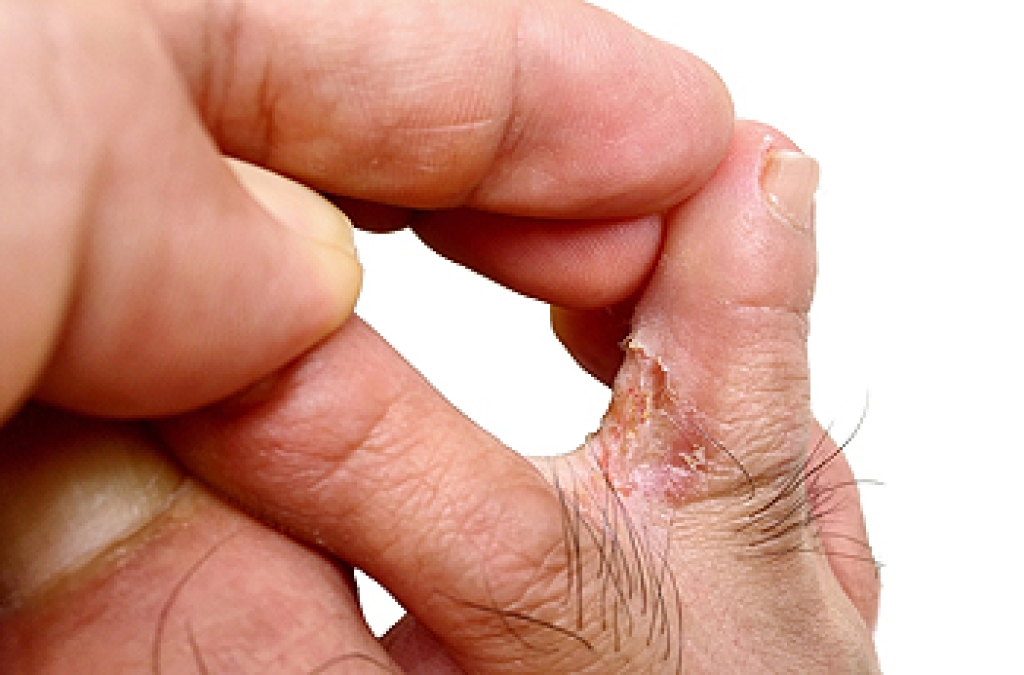
Athlete’s foot got its name because athletes sweat a lot and can develop the foot fungus called Tinea Pedis. However, anyone whose feet are subject to warm, wet conditions can get athlete’s foot. This fungus grows under and between the toes. The skin can crack, flake, itch, or burn, and it can be painful to walk. Those who walk barefoot around pools, in locker rooms, or in public showers are more prone to athlete’s foot. It is important to keep the feet clean and dry. The shoes worn should permit air to circulate so moisture does not become trapped. Socks should be made of fibers that absorb perspiration. Fungus-killing powders, creams, or lotions may be applied to feet after showers. If you suffer from this condition or need help preventing recurrences, see a chiropodist who can treat your feet and restore them to health.
Athlete’s foot can be uncomfortable and unsightly. To learn more about preventing and treating this condition, please consult with one of our chiropodists from West Toronto Foot & Ankle Clinic Inc. . Our chiropodist will assess your condition and provide you with quality foot and ankle treatment.
What Is Athlete’s Foot?
Athlete’s foot refers to an infection of the skin on the feet that is caused by a fungus. This fungus is contagious and thrives in warm and moist environments. It is often spread in common areas such as public pools, locker rooms, and showers. It can also spread when sharing personal items, like shoes or towels, with an infected person.
Symptoms
The symptoms of athlete’s foot may include:
- Itching, stinging, or burning of the skin on the feet
- Cracking or peeling skin, especially between the toes and on the soles of the feet
- Scaly, red rash on the foot
- Blisters
- Foul odor
Treatment
Treatment for athlete’s foot typically involves using over-the-counter topical antifungal medications on the feet. When over-the-counter options are ineffective, you may need to take prescription oral medications or topical antifungal drugs, or a combination of both.
Prevention
Preventing athlete’s foot places an emphasis on good foot hygiene practices.
You can prevent athlete’s foot by:
- Washing and drying your feet thoroughly every day
- Wearing shoes when walking in public areas
- Not sharing personal items, like shoes or socks, with others
- Wearing shoes and socks made out of breathable materials
If you have any questions please feel free to contact our office located in Toronto, ON .
